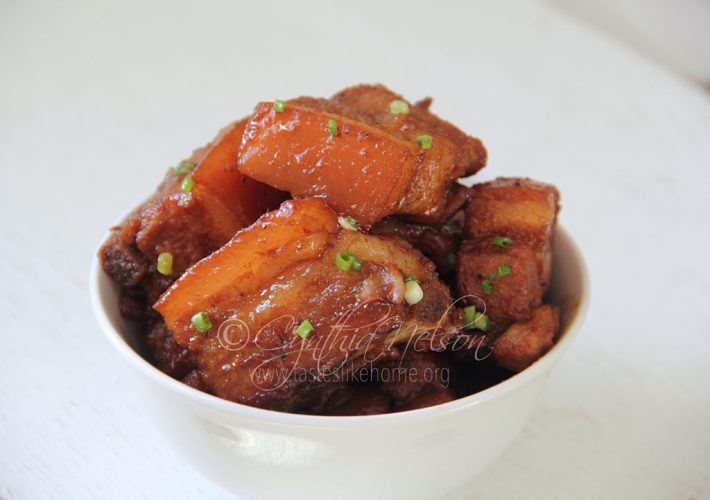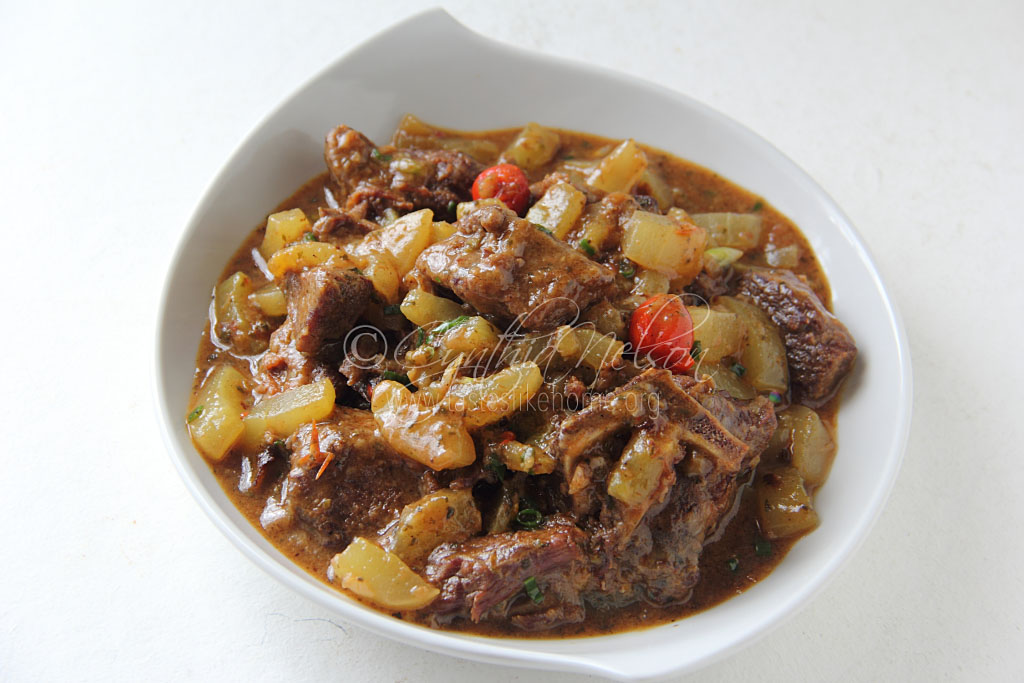 What’s Cooking is a series in which I answer questions and share advice about food and cooking that you may have, and things I may have found out myself that I want to share with you.
What’s Cooking is a series in which I answer questions and share advice about food and cooking that you may have, and things I may have found out myself that I want to share with you.
The other day I went over to the home of an elderly family friend, and she insisted that I join her for a meal which her caregiver had made. It was supposed to be curried chicken. I say supposed to be because it ended up being a curried chicken soup. In an effort to leave early, the caregiver decided to cook the curried chicken in a pressure cooker. It resulted in the chicken being cooked beyond recognition. The meat was completely shredded and melted; there were little lumps of potatoes, and the bones of the chicken sunk to the bottom of the pot all swimming in a watery soup.

You can make a pot of curried chicken in a pressure cooker, however, the cook time has to be short and the cooking liquid less than half of what you would normally put if cooking the curry in a regular pan/pot. And finally, the temperature should be dropped to medium-low after coming up to pressure.
Two days ago, a friend messaged to ask me how long to cook mutton in a pressure cooker. Mutton is meat from a sheep that is older than 1 year, ideally, 3 years old. It is tougher than lamb (meat from sheep that is less than 1 year old). I share with you my response.
It depends on the cut of meat (which part of the animal it comes from) and the size of the cut up meat. My friend was making a curry. The shoulder meat takes longer to cook while the legs and loin will take less time to cook. If the curry is to be cooked dried down, only put water to come shy of halfway up the meat, but if it is to be cooked to have a gravy/sauce to eat with rice or roti, then put half the amount of water you would put if you were cooking the curry in a karahi or any pot without pressuring.
A lot of people shy away from cooking meat in a pressure cooker, especially stews and curries because they don’t want the meat ruined. I agree with that. There is nothing more disheartening than excitedly looking forward to a luscious, luxurious meat stew or curry, only to have it turn to mush or shreds because it has been cooked to bits. Literally. But you know what, you don’t have to be fearful. Follow these tips and I bet you will soon grow in confidence using your pressure cooker to cook lamb, mutton, goat, beef, pork, duck and even turkey.
First, know your meat. In other words, which part of the animal the meat is coming from. You have heard of the terms white meat and dark meat right? White meat often refers to the lean tender parts of the carcass while dark meat refers to the tougher parts that get used most by the animal. The dark meat tends to have more muscle, tendon and tissues that need time to break down, hence taking a longer time to cook. While the white meat cooks up quickly.
In a chicken, the breast meat is the white meat. The legs, thighs and wings are the dark meat. There is always more flavour in the dark and tougher cuts of meat.
Second, how large or small you cut the meat will impact the cook time. Larger pieces will obviously take longer than the smaller pieces. Therefore, consider that when determining the cook time. There is also the issue of the age of the animal. The older the animal, the tougher the meat and this goes for poultry too. Think yard fowls or what we call creole fowls, fowl cocks and layer birds.
A butcher should guide you about the age of the animal and offer advice on cook times. And you can determine too based on the grain of the meat as well as its appearance.
Third, adjust the cooking liquid by using less than you would if cooking in a regular pot/pan. If you know that you would normally cover the meat with water to cook and reduce to give you the right consistency of sauce/gravy, use half of that amount or even a little less when cooking in a pressure cooker. If at the end of the cook time, the meat is cooked to your satisfaction but the sauce/gravy is still too much, remove the meat, let the liquid evaporate to your satisfaction then add back to the pot and let it cook down for a couple of minutes.
On the other hand, if the meat still needs about a couple of minutes to finish cooking, let it boil and cook with the sauce to reduce instead of pressuring it for the additional 2 minutes.
If you are cooking your meat and you want it to be dry with the thick sauce clinging to the meat, then add the cooking liquid that just comes shy of halfway up the meat. Again, if the meat is done cooking when you check but there is more liquid in the pot than you want, remove the meat and let it dry down then add back the meat.
Tip: Always remember that meat releases its own juices so let that be a consideration when adding liquid to cook your stew or curry.
Fourth, once the cooker comes up to pressure, reduce the heat between medium and low. Now depending on your pressure cooker – hiss and whistle or constant high hissing, you should know when it is up to pressure. If it is a whistling pressure cooker, after the first 3 whistles, reduce the heat. Don’t worry that you do not hear it whistle again as the food cooks, it is still pressuring. If you are using a cooker with a constant hiss, when it comes up to pressure, let it cook for 5 minutes then reduce the heat.
In terms of actual cooking time, there is nothing exact about that because there are so many variables to consider – the quantity being cooked, type of material the pressure cooker is made of, the energy being used – gas versus electric – and how you want the dish finished, dry or with a sauce/gravy.
Here’s a rough cooking guide with the assumption that you are cooking a stew or curry and the meat is dark meat – shoulder, ribs, belly/flap – and it has been cut up into 2-inch pieces. Once it comes up to a pressure, reduce the heat and then start the timing anywhere from 10 to 15 minutes. Check and adjust based on the recommendations given above.
Tip: If you are going to add potatoes or vegetables to your meats, do so 5 minutes before the dish is done cooking. Release the pressure off the heat, add and stir in then close and bring back to pressure.
Cynthia










